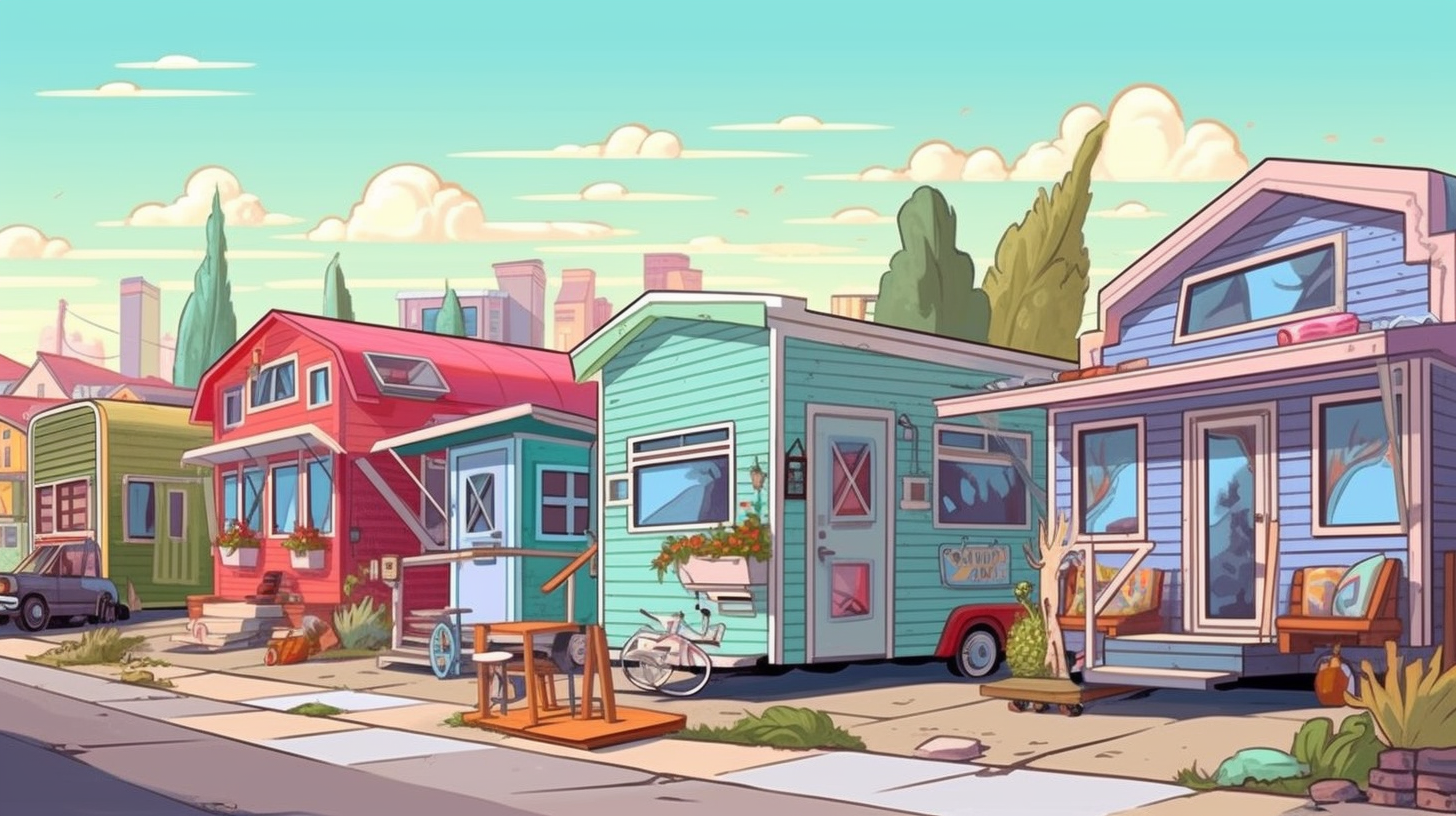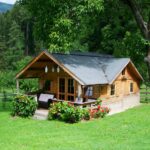Beginners Guides
How To Start A Tiny House Rental Business

Are you prepared to earn substantial income from a small investment? Launching a rental business for tiny houses is akin to discovering a treasure within the flourishing hospitality sector. This opportunity is a veritable goldmine awaiting exploration, and I am here to guide you through it.
Imagine being the captain of your own ship, navigating through uncharted waters of entrepreneurship, and reaping the rewards of your hard work. With a little research, planning, and creativity, you can tap into the growing demand for unique, eco-friendly accommodations and create a successful business that brings joy to travelers and fills your pockets.
But where do you start? How do you turn your dreams of owning a profitable tiny house rental business into reality? Don’t worry, I’ve got you covered.
In this article, I’ll guide you through the essential steps to launch your venture, from researching the market and designing your tiny houses to setting competitive pricing and establishing excellent customer service. So buckle up, because your journey to tiny house rental success starts now.
Key Takeaways
- Research the market, identify target audience, and analyze competitors.
- Determine location and size of tiny houses based on target audience’s needs and popular destinations.
- Develop a pricing strategy and marketing plan, utilizing online booking platforms and social media.
- Establish strong customer service and communication channels, actively engage with customers, and use feedback to improve offerings.
Research the Market and Identify Your Target Audience
Now that you’ve decided to start your own tiny house rental business, it’s time to dive into researching the market and identifying who your target audience will be.
Identifying market trends and conducting competitor analysis are crucial steps in this process. By understanding the current demand for tiny house rentals and analyzing what your competitors are offering, you can position your business in a way that meets the needs of your target audience and sets you apart from the competition.
Look into popular destinations for tiny house rentals, such as vacation spots or areas with a high demand for short-term accommodations. Additionally, consider the size and amenities that your target audience is looking for in a tiny house rental.
By conducting thorough research and analysis, you can determine the location and size of your tiny houses that will best appeal to your target audience.
Determine the Location and Size of Your Tiny Houses
First, think about where you want to place your adorable little homes and how many you want to have. Location selection is crucial for the success of your tiny house rental business. Consider areas with high demand for vacation rentals or unique accommodations, such as popular tourist destinations or areas with a shortage of affordable housing.
Research local zoning and building codes to ensure that you can legally operate your tiny houses in your chosen location. Additionally, think about the size of your tiny houses. Will you offer a variety of sizes to accommodate different needs and preferences? Keep in mind that larger tiny houses may attract families or groups, while smaller ones may appeal to solo travelers or couples.
Once you have determined the location and size of your tiny houses, you can move on to the next step of creating a business plan and setting a budget.
Create a Business Plan and Set a Budget
Developing a solid business plan and establishing a budget are essential for turning your tiny house venture into a thriving and profitable enterprise. As the saying goes, ‘Failing to plan is planning to fail.’
Conducting a comprehensive business analysis will help you identify your target market, understand the competition, and determine the unique selling points of your tiny house rentals.
Financial planning is crucial to ensure you have enough capital to cover start-up costs, such as purchasing or building the tiny houses, as well as ongoing expenses like maintenance and marketing. Here are five key points to consider:
- Determine your pricing strategy to maximize revenue without deterring potential customers.
- Create a marketing plan to attract and retain customers, utilizing online platforms and social media.
- Develop a budget that accounts for all expenses, including utilities, insurance, and property management fees.
- Establish financial projections to assess the profitability of your business and make informed decisions.
- Monitor and adjust your financial plan regularly to adapt to market changes and maintain financial sustainability.
With a well-thought-out business plan and a carefully crafted budget, you can now move on to obtaining the necessary permits and licenses to operate your tiny house rental business smoothly.
Obtain the Necessary Permits and Licenses
To kickstart your venture, it’s crucial to secure all the required permits and licenses for your thriving and profitable enterprise.
Before you can start renting out your tiny houses, you need to make sure you comply with all the permit requirements and legal documentation. The specific permits and licenses you’ll need may vary depending on your location, so it’s important to research and understand the regulations in your area.
Common permits include zoning permits, building permits, and occupancy permits. Additionally, you may need to obtain a business license and register your rental properties with the appropriate authorities.
By obtaining the necessary permits and licenses, you ensure that your business operates legally and avoids potential fines or shutdowns.
With all the legalities in place, you can now move on to designing and furnishing your tiny houses for comfort and style.
Design and Furnish Your Tiny Houses for Comfort and Style
Now that you’ve obtained all the necessary permits and licenses, it’s time to bring your tiny houses to life. Transform them into cozy havens that will captivate the hearts of your guests.
To ensure your tiny houses are both comfortable and stylish, it’s important to stay up-to-date with the latest tiny house decor trends. Consider incorporating minimalist design elements, such as clean lines and neutral color palettes, to create a sense of spaciousness.
Additionally, maximize space in your tiny houses by utilizing multifunctional furniture pieces, such as sofa beds or storage ottomans. Don’t forget to include plenty of storage solutions to keep the space clutter-free.
Lastly, add personal touches and unique details to make each tiny house truly special. With the right design and furnishings, your tiny houses will be irresistible to potential customers.
Moving forward, let’s discuss how to develop a marketing strategy to attract customers.
Develop a Marketing Strategy to Attract Customers
Are you ready to attract a steady stream of customers to your cozy havens? In order to effectively market your tiny house rentals, you need to utilize digital marketing strategies.
Social media platforms like Facebook and Instagram can be powerful tools for showcasing your unique accommodations and generating interest. Consider creating visually appealing content that highlights the charm and functionality of your tiny houses.
Additionally, focus on creating unique experiences for your customers. This could include offering personalized welcome packages, hosting local events, or providing recommendations for nearby attractions. By going above and beyond, you can differentiate your rental business from competitors and attract more bookings.
Now, let’s dive into the next section where we’ll discuss how to set competitive pricing and booking policies.
Set Competitive Pricing and Booking Policies
Make sure your cozy haven stands out from the competition by setting competitive prices and implementing booking policies that provide a smooth and hassle-free experience for your potential guests, just like a well-oiled machine that keeps the gears turning effortlessly.
Here are three key considerations for setting competitive pricing and booking policies:
-
Research pricing strategies: Analyze the market and identify the average rates for similar tiny house rentals in your area. Consider factors such as location, amenities, and demand to determine a competitive price range that attracts customers while ensuring profitability.
-
Utilize booking platforms: Leverage online booking platforms like Airbnb or VRBO to reach a wider audience and streamline the reservation process. These platforms provide built-in features like secure payment systems, guest reviews, and calendar management, making it easier to manage bookings and attract potential guests.
-
Flexibility and cancellation policies: Offer flexible booking options, such as different lengths of stay or discounted rates for longer reservations. Additionally, establish clear cancellation policies that protect your business while also being fair to guests.
By setting competitive pricing and implementing convenient booking policies, you will create a strong foundation for your tiny house rental business.
In the next section, we will discuss how to establish strong customer service and communication channels to enhance the guest experience.
Establish Strong Customer Service and Communication Channels
Establishing strong customer service and communication channels is essential for creating a memorable and enjoyable experience for your guests, ensuring their needs are met and fostering positive relationships.
By actively engaging with your customers and promptly addressing their concerns, you can build trust and loyalty. Encourage customer feedback and use online reviews as valuable tools to understand your guests’ preferences and improve your offerings. Responding to reviews, both positive and negative, demonstrates your commitment to customer satisfaction.
Additionally, implementing clear and efficient communication channels, such as a responsive website, email, and social media platforms, allows guests to easily reach out to you with any inquiries or requests. This open line of communication will help you address their needs promptly and provide personalized assistance.
As you establish strong customer service practices, you can simultaneously build relationships with local suppliers and service providers, enhancing the overall guest experience.
Build Relationships with Local Suppliers and Service Providers
By actively cultivating connections with local suppliers and service providers, you can tap into their expertise and resources, enriching the offerings and experiences available to your guests.
Local supplier partnerships allow you to source high-quality materials and furnishings for your tiny houses, ensuring that they’re comfortable and well-equipped.
Collaborating with service providers such as cleaning companies, landscapers, and maintenance professionals ensures that your properties are well-maintained and ready for guests at all times.
Building strong relationships with these local businesses not only helps you provide a better experience for your guests but also supports the local economy.
Additionally, by working closely with suppliers and service providers, you may be able to negotiate better deals or exclusive arrangements that give your rental business a competitive edge.
Moving forward, continuously improving and expanding your tiny house rental business will involve implementing effective marketing strategies and optimizing your operational processes.
Continuously Improve and Expand Your Tiny House Rental Business
To truly skyrocket your tiny house empire, you’ll want to keep pushing the boundaries and expanding your horizons, always seeking new opportunities for growth and improvement.
Continuous improvement strategies are essential for the success of your tiny house rental business. As you gain experience and knowledge in the industry, you should constantly be looking for ways to enhance your operations and provide a better experience for your customers. This could involve investing in new amenities or technologies, optimizing your booking and management systems, or even expanding your offerings to different locations.
Scaling up operations is another crucial aspect of growing your business. This may involve adding more tiny houses to your portfolio, hiring additional staff, or partnering with other businesses to offer complementary services.
By continuously improving and expanding, you can ensure the long-term success and profitability of your tiny house rental business.
Frequently Asked Questions
How do I research the market and identify my target audience for a tiny house rental business?
To conduct market research and identify the target audience for a tiny house rental business, I’d start by analyzing demographic data and trends in the housing market. This would help me understand the demand for tiny house rentals and the characteristics of potential renters.
Additionally, I’d conduct surveys, interviews, and focus groups to gather insights directly from potential customers. By combining quantitative and qualitative research methods, I can gain a comprehensive understanding of the market and identify the target audience for my business.
What factors should I consider when determining the location and size of my tiny houses?
When determining the location and size of my tiny houses, I consider several factors.
Firstly, I need to find a location that is desirable and accessible to my target audience. Proximity to tourist attractions, natural beauty, and amenities is crucial.
Secondly, I analyze the demand for different sizes of tiny houses in the area. Assessing the needs of potential renters helps me decide on the appropriate square footage and layout.
Balancing these factors ensures that my tiny houses will be in high demand and profitable.
How do I create a business plan and set a budget for my tiny house rental business?
To create a business plan and set a budget for my tiny house rental business, I’d start by developing a marketing strategy. This would involve identifying my target audience, researching competitors, and determining effective promotional tactics.
Additionally, I’d carefully consider managing maintenance costs, as they can significantly impact profitability. This would include budgeting for regular maintenance and repairs, as well as implementing preventative measures to minimize expenses in the long run.
What permits and licenses do I need to obtain to legally operate a tiny house rental business?
To legally operate a tiny house rental business, it’s essential to obtain the necessary permits and licenses. This includes complying with zoning restrictions and regulations set by local authorities.
Permits ensure that your business meets safety standards and operates within the legal framework. It’s crucial to research and contact your local government offices to understand the specific permits and licenses required for your area.
Meeting these requirements will help you start your tiny house rental business on the right foot.
How can I establish strong customer service and communication channels for my tiny house rental business?
To establish strong customer service and communication channels for my tiny house rental business, I prioritize customer satisfaction by actively listening to their needs and addressing any concerns promptly.
Effective communication is key, so I utilize various channels like phone, email, and social media to stay connected with my customers.
I also ensure clear and timely responses to inquiries and feedback.
By providing exceptional customer service, I aim to build long-lasting relationships and create a positive reputation for my business.
Conclusion
In conclusion, starting a tiny house rental business requires careful planning, research, and dedication. By identifying your target audience, determining the location and size of your tiny houses, and creating a comprehensive business plan, you can set yourself up for success.
Obtaining the necessary permits and licenses, designing and furnishing your tiny houses with comfort and style, and establishing strong customer service channels are essential steps in providing a memorable experience for your guests.
Remember, Rome wasn’t built in a day, so continuously improving and expanding your business is key to long-term success in this booming industry. Keep your eye on the prize and watch your tiny house rental business thrive!
Hi, I’m Emma. I’m the Editor in Chief of Tiny House 43, a blog all about tiny houses. While tree houses are often associated with childhood, they can be the perfect adult retreat. They offer a cozy space to relax and unwind, surrounded by nature. And since they’re typically built on stilts or raised platforms, they offer stunning views that traditional homes simply can’t match. If you’re looking for a unique and romantic getaway, a tree house tiny house might just be the perfect option.
Beginners Guides
How Do I Get Rid of Tiny White Bugs on My House Plants

- Health risks associated with tiny white bugs on house plants.
- Effective methods to prevent infestations of tiny white bugs on house plants
I am facing a small white insect issue with my indoor plants, and it is really frustrating me! These annoying bugs seem to be multiplying quickly, causing damage to my precious plants.
But fear not, my fellow plant enthusiasts, for I’ve done my research and found some effective solutions to eliminate these unwelcome guests.
In this article, I’ll share with you the knowledge and remedies I’ve discovered, so you too can reclaim your bug-free, thriving indoor garden.
Key Takeaways
- Aphids, mealybugs, and whiteflies are common types of tiny white bugs found on house plants.
- Lack of proper plant care, overwatering, and bringing infested plants indoors can lead to bug infestations.
- Homemade insecticides using water and dish soap or neem oil can suffocate and disrupt the feeding patterns of pests.
- Regular cleaning and inspection routines help detect and address pest issues early on.
Identifying the Tiny White Bugs on Your House Plants
I can easily spot the tiny white bugs on my house plants by carefully examining the leaves and stems. The most common species of these pests found on house plants are aphids, mealybugs, and whiteflies.
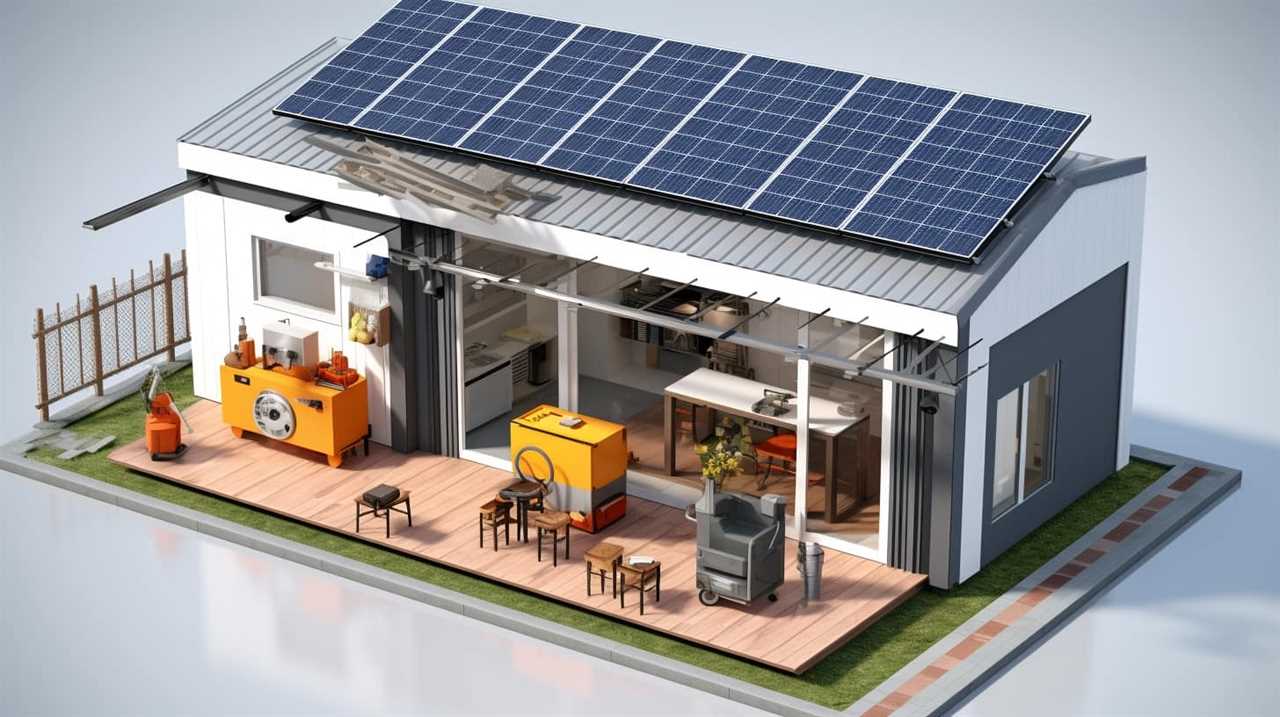
Aphids are small, pear-shaped insects that cluster on new leaves and buds.
Mealybugs are covered in a white, waxy substance and can be found on the undersides of leaves and in leaf axils.
Whiteflies, as the name suggests, are tiny white insects that fly around when disturbed.
An infestation of these tiny white bugs can cause significant damage to your house plants. Signs of infestation include yellowing leaves, stunted growth, distorted foliage, and a sticky residue called honeydew on the leaves. Furthermore, these pests can transmit plant diseases, weaken the plant’s immune system, and attract other pests.
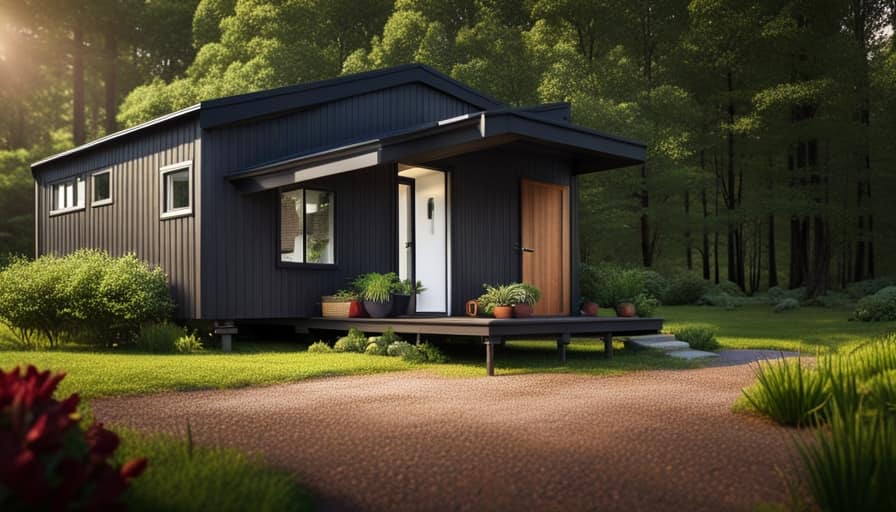
Understanding the causes of infestation is crucial in effectively getting rid of these tiny white bugs on your house plants.
Understanding the Causes of Infestation
Understanding the causes of infestation is essential in effectively eliminating these tiny white bugs on my house plants. Here are a few key factors to consider:
- Lack of proper plant care: Neglecting to provide adequate water, sunlight, and nutrients can weaken plants, making them more susceptible to bug infestations.
- Overwatering: Excessive moisture can create a favorable environment for pests like aphids and mealybugs.
- Bringing infested plants indoors: Introducing plants from outside without proper inspection can bring unwanted bugs into your home.
Recognizing the signs of bug damage is crucial for preventing infestation. Look out for yellowing, wilting leaves, sticky residue on leaves and stems, and tiny white bugs crawling on the plant’s surface.
Now that we understand the causes of infestation, let’s explore natural remedies to eliminate these pesky bugs.
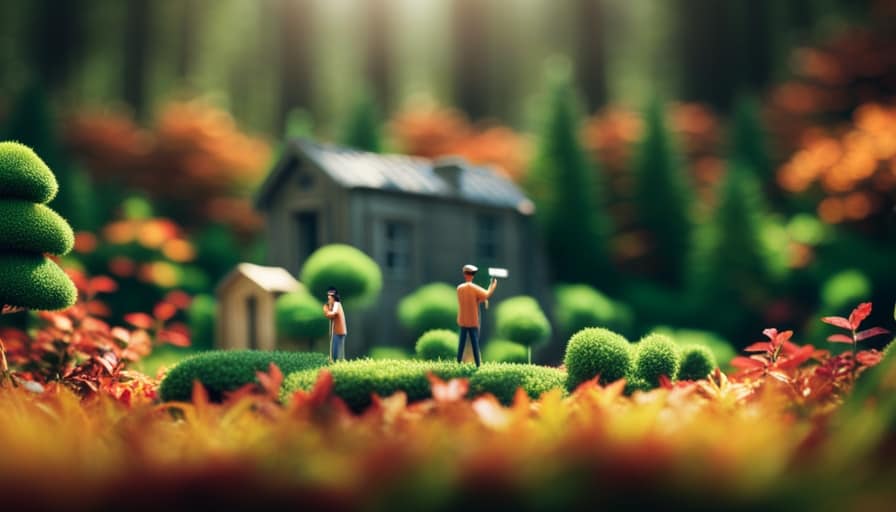
Natural Remedies to Eliminate the Bugs
To effectively get rid of these tiny white bugs on my house plants, I’ll need to rely on natural remedies that can eliminate them without harming the plants.
One effective option is to create homemade insecticides using ingredients readily available in your kitchen. You can mix a solution of water and dish soap, or water and neem oil, and spray it directly on the affected plants. These solutions work by suffocating the pests and disrupting their feeding patterns.
Another natural approach is to introduce insect-repelling plants into your garden. Plants like lavender, mint, and marigold emit fragrances that repel insects, keeping them away from your precious plants.
Chemical Solutions for a Lasting Bug-Free Environment
One effective chemical solution for achieving a bug-free environment is using a professional-grade insecticide spray. These sprays are specifically formulated to target and eliminate pests, including tiny white bugs on house plants. When using a professional-grade insecticide spray, it’s important to follow the instructions provided by the manufacturer to ensure safe and effective use.
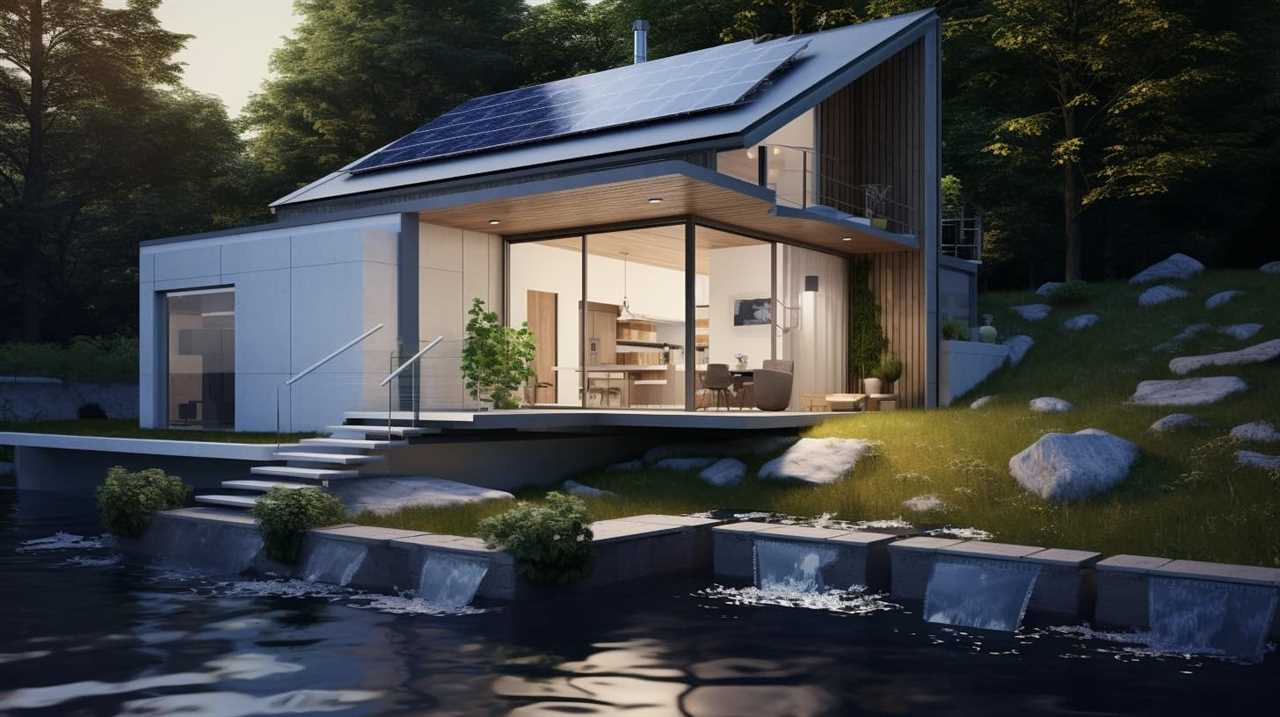
Additionally, consider these non-toxic alternatives to chemical solutions for pest control:
-
Neem oil: Derived from the neem tree, neem oil is a natural insecticide that can be effective against a wide range of pests. It works by disrupting the insect’s life cycle and repelling them from plants.
-
Insecticidal soap: Made from potassium salts of fatty acids, insecticidal soap works by suffocating pests on contact. It’s safe to use on most plants and can be an effective solution against white bugs.
-
Diatomaceous earth: This powdery substance is made from fossilized remains of diatoms and acts as a desiccant, drying out and killing insects.
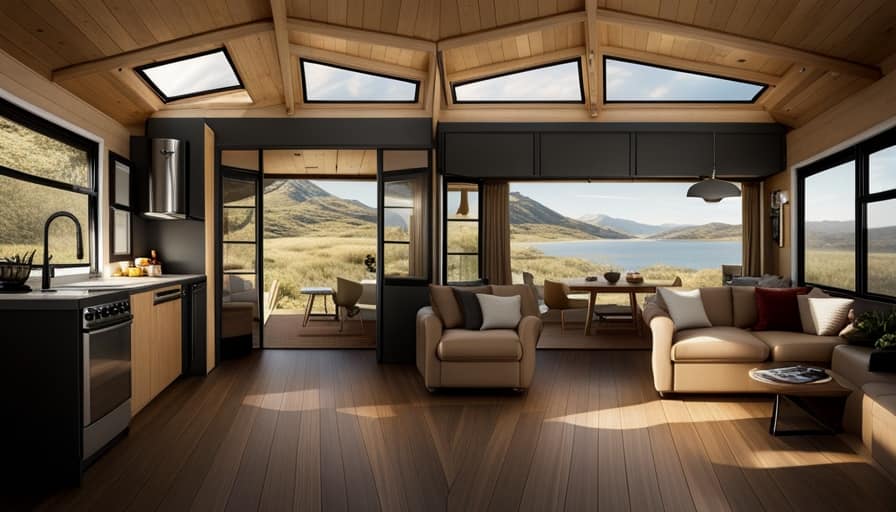
When using any chemical solution or non-toxic alternative, it’s essential to monitor the plants closely and repeat the treatment as necessary to maintain a bug-free environment. Professional pest control services can also provide expert guidance and assistance in achieving long-lasting results.
Preventing Future Infestations and Maintaining Healthy House Plants
To effectively prevent future infestations and maintain healthy house plants, I will implement a regular cleaning and inspection routine. This will help ensure that any signs of pests or diseases are detected early on and addressed promptly. Regularly cleaning the leaves and stems of my plants with a mild soap and water solution will help remove any dust or debris that can attract pests. Additionally, I will inspect the plants for any signs of infestation, such as white bugs or sticky residue on the leaves. To further enhance plant hygiene, I will also consider using beneficial insects, such as ladybugs or lacewings, which feed on common plant pests like aphids. By incorporating these practices into my routine, I can maintain healthy house plants and prevent future infestations.
| Regular Cleaning | Inspection Routine | Using Beneficial Insects |
| Remove dust and debris | Check for signs of infestation | Introduce ladybugs or lacewings to control pests |
| Promotes plant hygiene | Detect and address issues early | Natural pest control method |
| Prevents pest attraction | Maintain healthy house plants | Encourages ecosystem balance |
Frequently Asked Questions
Can These Tiny White Bugs Harm Humans?
Yes, tiny white bugs on house plants can harm humans. They can cause skin irritations and allergic reactions. It’s important to take steps to prevent infestations, such as regularly inspecting and cleaning your plants.
How Long Does It Take for Natural Remedies to Eliminate the Bugs Completely?
To completely eliminate the tiny white bugs using natural remedies, it typically takes a few weeks of consistent application. However, the effectiveness of these remedies can vary. It’s important to avoid common mistakes like under-applying or using incorrect remedies.
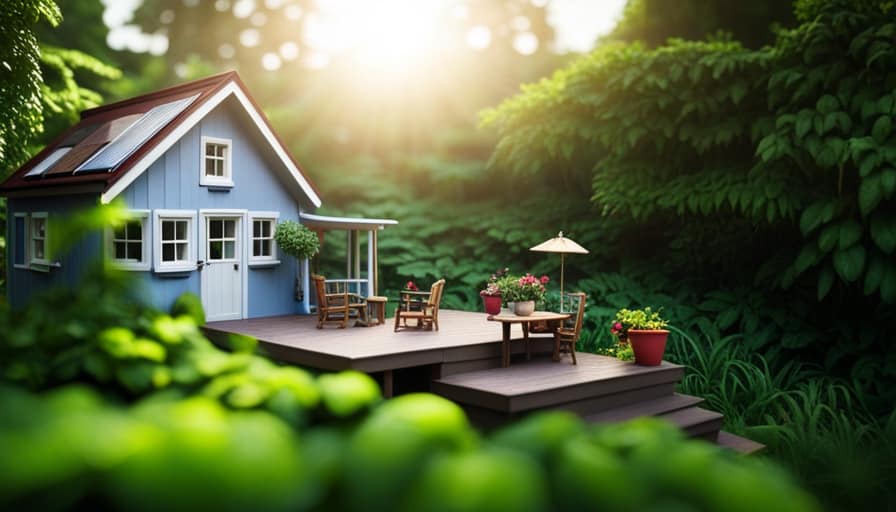
Are There Any Specific Types of House Plants That Are More Prone to Infestations?
Certain house plants, like lavender and marigolds, have natural repellent properties that can help prevent infestations. It’s important to choose plants that are known to repel bugs and to regularly inspect and clean your plants to avoid any potential infestations.
Can These Bugs Spread From One House Plant to Another?
Oh, the joy of tiny white bugs on house plants! Yes, these pests can spread from one plant to another. To control them, use insecticides and watch out for signs of infestation like sticky residue or wilting leaves.
How Often Should I Check My House Plants for Signs of Infestation?
I check my house plants for signs of infestation regularly to ensure their health. Common signs include tiny white bugs and yellowing leaves. Preventative measures like proper watering and cleaning can help keep plants bug-free.
Conclusion
In conclusion, taking care of our house plants goes beyond watering and sunlight. Identifying and eliminating tiny white bugs is a crucial part of maintaining a healthy environment for our plants.
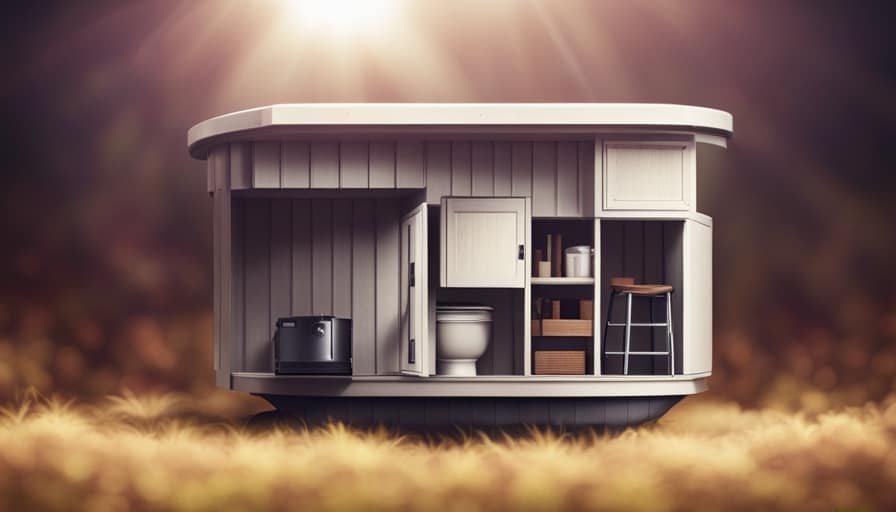
By understanding the causes of infestation and using natural or chemical remedies, we can ensure a bug-free environment. Remember, prevention is key, so regularly inspect your plants and take necessary measures to keep them thriving.
Happy gardening!
I’m Theodore, and I love tiny houses. In fact, I’m the author of Tiny House 43, a book about tiny houses that are also tree houses. I think they’re magical places where imaginations can run wild and adventures are just waiting to happen.
While tree houses are often associated with childhood, they can be the perfect adult retreat. They offer a cozy space to relax and unwind, surrounded by nature. And since they’re typically built on stilts or raised platforms, they offer stunning views that traditional homes simply can’t match.
If you’re looking for a unique and romantic getaway, a tree house tiny house might just be the perfect option.
Beginners Guides
How Do I Get Rid of Tiny Moths in My House

I have experienced the frustration of dealing with tiny moths flying around my food in the kitchen. But do not worry, I have a solution for you.
In this article, I’ll show you how to banish those pesky moths from your house for good. We’ll dive into identifying different moth species, understanding what attracts them, and simple prevention techniques you can implement.
Plus, I’ll share some natural remedies and professional options as a last resort. Say goodbye to those unwanted guests!
Key Takeaways
- Identifying the specific moth species is crucial for implementing targeted control measures.
- Moths are attracted to food sources, fabrics, and organic materials, so it’s important to store food in airtight containers and keep the house clean.
- Moths prefer dark, undisturbed areas to lay their eggs, so sealing cracks and openings in walls, windows, and doors can help prevent infestation.
- If natural remedies and DIY methods fail, it is advisable to seek professional pest control services for thorough inspection and tailored treatment plans.
Identifying the Culprits: What Type of Moth Is Invading Your Home
I can’t figure out what kind of moth is infesting my home. It’s frustrating not knowing the exact species, as different moths have different behaviors and habits. Identifying the culprits is crucial in order to effectively address the problem.

There are several common moth species that are known to invade homes, such as the Indian mealmoth, clothes moth, and pantry moth. Each species has distinct characteristics that can help with identification. Understanding their behavior is also important as it can give insights into their lifecycle and potential sources of infestation.
Moths are attracted to food sources, fabrics, and other organic materials. They can lay eggs in stored grains, textiles, or even pet food. By understanding the specific species and their behavior, it becomes easier to implement targeted control measures and prevent further infestations.
Understanding the Infestation: Why Are Moths Attracted to Your House
To effectively address the infestation, it’s essential to understand why moths are attracted to your house. Here are four reasons why moths may be flocking to your home:
-
Food sources: Moths are attracted to food, especially grains, cereals, and dried fruits. They can easily find their way into your pantry and feast on these items.
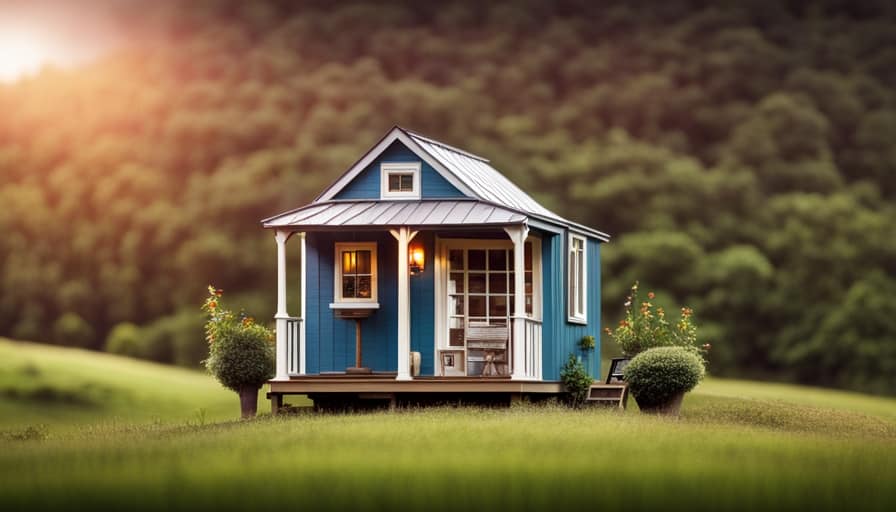
-
Moisture and humidity: Moths thrive in damp environments, making your house an ideal breeding ground if there are areas with high humidity or water leaks.
-
Suitable habitat: Moths are drawn to dark, undisturbed areas where they can lay their eggs undisturbed. This includes closets, attics, and basements.
-
Outdoor attraction: Moths can be attracted to your house from the outside, especially if you have outdoor lights that are left on at night.
Understanding moth behavior and their attraction to your house is crucial in preventing further infestation. By addressing these factors, you can take steps to keep moths at bay and protect your home.

Here are some moth prevention tips:
- Store food in airtight containers.
- Keep your house clean and free of crumbs or spills.
- Fix any leaks or moisture issues promptly.
- Use moth repellents or traps in vulnerable areas.
Prevention Is Key: Simple Steps to Keep Moths From Entering Your Home
Prevention is essential, so I’ll share some simple steps to keep moths from entering your home. By taking a proactive approach, you can create an inhospitable environment for moths and minimize the risk of infestations. One effective method is to use moth repellent products, such as sachets or sprays, in areas where moths are commonly found. These repellents contain chemicals that deter moths from entering your home. Additionally, it is crucial to seal any cracks or openings in your walls, windows, and doors. Moths can easily slip through these tiny gaps, so using caulk or weatherstripping can help keep them out. Regularly vacuuming and cleaning your home can also eliminate moth eggs or larvae that may be hiding in carpets or corners. By implementing these preventive measures, you can ensure a moth-free home environment.
| Steps to Keep Moths Away | |
|---|---|
| Use moth repellent products | Seal cracks and openings |
| Regularly vacuum and clean |
Natural Remedies: Non-Toxic Solutions to Get Rid of Moths
One effective way to get rid of moths naturally is by using a combination of vinegar and water to create a non-toxic moth spray. Here are some natural remedies you can try:
-
Vinegar and water spray: Mix equal parts vinegar and water in a spray bottle. Spray this solution on areas where moths are present, such as closets, drawers, and pantry shelves. The strong odor of vinegar repels moths and prevents them from laying eggs.
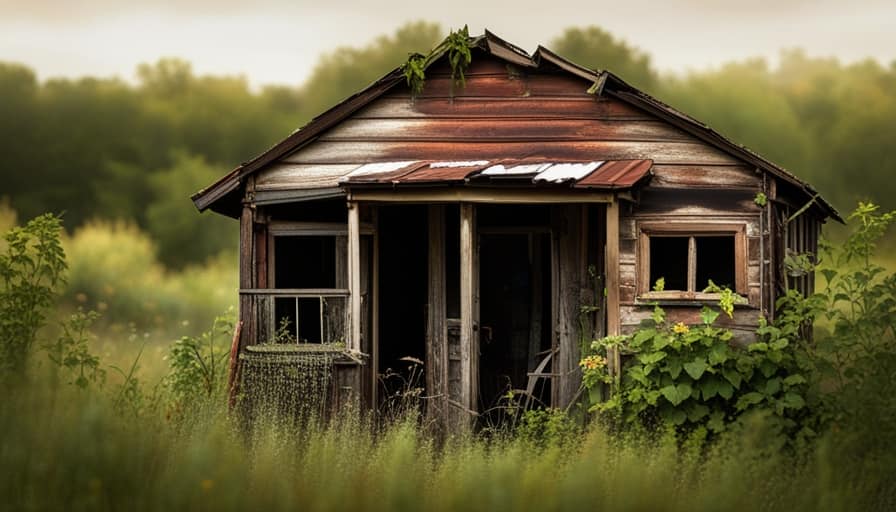
-
Cedar chips: Moths dislike the smell of cedar, so placing cedar chips in your closets and drawers can help deter them. You can also use cedar oil or cedar sachets for the same effect.
-
Homemade traps: Create simple moth traps by placing a mixture of vinegar, sugar, and dish soap in a bowl. The sweet scent attracts moths, and the dish soap traps them when they try to land on the mixture.
-
Lavender sachets: Moths are repelled by the fragrance of lavender. Place dried lavender in small sachets and tuck them in your clothing drawers or hang them in your closets.
These natural repellents and homemade traps can help you get rid of moths without using toxic chemicals. However, if these methods fail to eliminate the infestation, it may be time to consider professional pest control options.
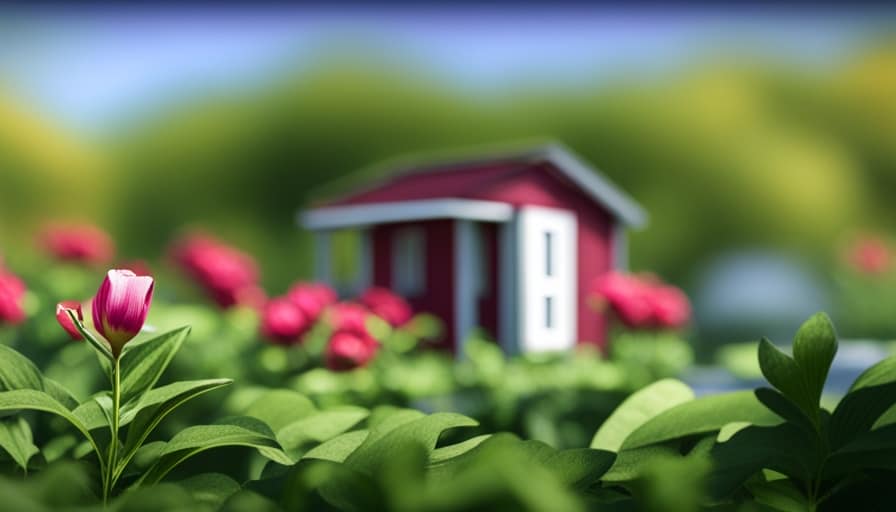
Last Resort: When All Else Fails, Professional Pest Control Options
If I’ve exhausted all other options, I’ll contact a professional pest control service to eliminate the moth infestation in my house. While natural remedies and DIY methods can be effective for small infestations, sometimes the problem persists or worsens despite our best efforts.
This is when it’s crucial to call in the experts. Professional pest control services have the knowledge, experience, and resources to effectively eradicate moth infestations. They’ll conduct a thorough inspection of your home to identify the source of the infestation and develop a tailored treatment plan.
The benefits of hiring professionals include their expertise in identifying different moth species, their access to specialized equipment and pesticides, and their ability to ensure the complete eradication of the infestation.
When all else fails, it’s best to rely on the expertise of professional pest control services to rid your home of those persistent moths.

Frequently Asked Questions
Can Moths Cause Any Damage to My House or Belongings?
Moths can cause damage to fabrics, carpets, and stored food. It’s important to address a moth infestation promptly. Using natural moth repellents, like lavender or cedar, can help deter them from your house and protect your belongings.
Are All Types of Moths Attracted to Homes, or Are There Specific Species That Are More Common?
In the world of moths, certain species have a penchant for our cozy homes. Understanding the types commonly found indoors can help us prevent the dreaded infestations from taking hold in the first place.
How Long Does It Usually Take to Get Rid of a Moth Infestation Using Natural Remedies?
Using natural remedies to get rid of a moth infestation can be effective, but the time it takes varies depending on the severity. Common signs of an infestation include sightings of adult moths and larvae, as well as damaged fabrics or food products.
Can Moths Carry Diseases or Pose a Health Risk to Humans?
Moths can transmit diseases to humans, so it’s important to take precautions. Individuals with allergies or asthma may experience respiratory issues due to moth infestations in homes.

Are There Any Specific Plants or Herbs That Repel Moths and Can Be Used as Natural Remedies?
Using natural moth repellents, such as specific plants and herbs, offers several benefits over chemical alternatives. Creating a moth repelling garden with lavender, rosemary, and mint can effectively deter moths from your house.
Conclusion
In conclusion, it’s essential to address the presence of these minuscule pests in your home promptly. By identifying the specific type of moth invading your space and understanding their attraction, you can take preventive measures to keep them at bay.
Utilizing natural remedies and seeking professional pest control services as a last resort will ensure a moth-free environment without compromising your household’s well-being.
Stay vigilant and employ these effective methods to bid farewell to these unwelcome visitors.

I’m Theodore, and I love tiny houses. In fact, I’m the author of Tiny House 43, a book about tiny houses that are also tree houses. I think they’re magical places where imaginations can run wild and adventures are just waiting to happen.
While tree houses are often associated with childhood, they can be the perfect adult retreat. They offer a cozy space to relax and unwind, surrounded by nature. And since they’re typically built on stilts or raised platforms, they offer stunning views that traditional homes simply can’t match.
If you’re looking for a unique and romantic getaway, a tree house tiny house might just be the perfect option.
Beginners Guides
How Difficult Is It to Build a Tiny House in Colorado Springs

I understand your concerns about building a tiny house in Colorado Springs. However, I can assure you that with the proper knowledge and guidance, it is completely achievable.
In this article, I’ll walk you through the zoning regulations, permitting process, finding suitable land, and navigating building codes. We’ll also discuss securing financing, budgeting, and dealing with utilities.
So, if you’re ready to embark on this rewarding journey, let’s dive in and make your tiny house dreams a reality.
Key Takeaways
- Zoning regulations and building permits are required for constructing a tiny house in Colorado Springs.
- Finding suitable land that complies with zoning regulations is important for placing a tiny house.
- Familiarizing oneself with local building codes and regulations, and following safety guidelines is necessary.
- Researching various financing options and presenting a detailed budget can increase the chances of securing financing for building a tiny house.
Zoning Regulations and Permitting Process
I’ll need to research the zoning regulations and permitting process before starting to build my tiny house in Colorado Springs. Understanding these regulations is crucial as they dictate where and how I can construct my tiny house.
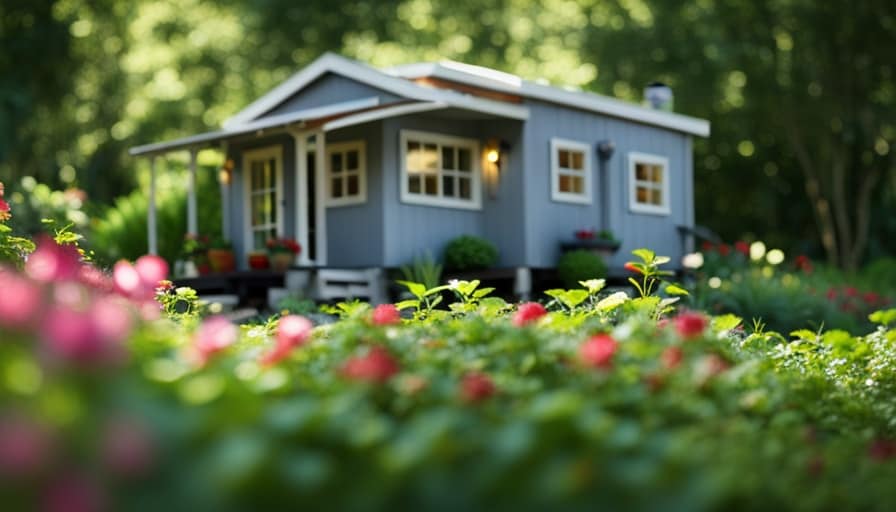
One key aspect to consider is the impact of tiny houses on property values. While some argue that they can decrease property values, others believe that they can actually increase them by adding diversity and uniqueness to the community.
Additionally, one of the challenges I may face is finding legal parking for my tiny house in urban areas. Many cities have restrictions on where tiny houses can be parked, making it essential to find suitable parking options that comply with local regulations.
With these factors in mind, I can now move on to finding suitable land for my tiny house.
Finding Suitable Land for Your Tiny House
After researching the zoning regulations and permitting process, it’s now time to start finding suitable land for my tiny house in Colorado Springs.
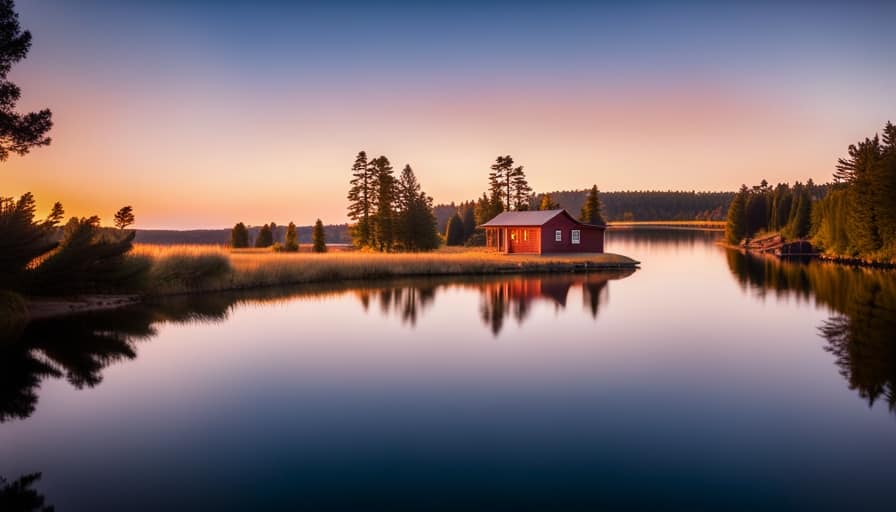
When it comes to finding land for a tiny house, there are a few important factors to consider. One of the major challenges is land availability constraints. Due to the increasing popularity of tiny houses, finding land that allows for their construction can be difficult. It’s important to do thorough research and explore different options, such as contacting local real estate agents or checking online platforms that specialize in tiny house-friendly land.
Additionally, environmental impact considerations are crucial. It’s important to choose a location that minimizes the impact on the surrounding environment and aligns with sustainable practices.
Taking these factors into account will ensure that I find a suitable piece of land for my tiny house in Colorado Springs.
Navigating Building Codes and Inspections
When it comes to navigating building codes and inspections for my tiny house in Colorado Springs, I’ll need to familiarize myself with the local regulations and ensure compliance throughout the construction process. Understanding local regulations is crucial to avoid any legal issues and ensure that my tiny house meets all the necessary requirements.
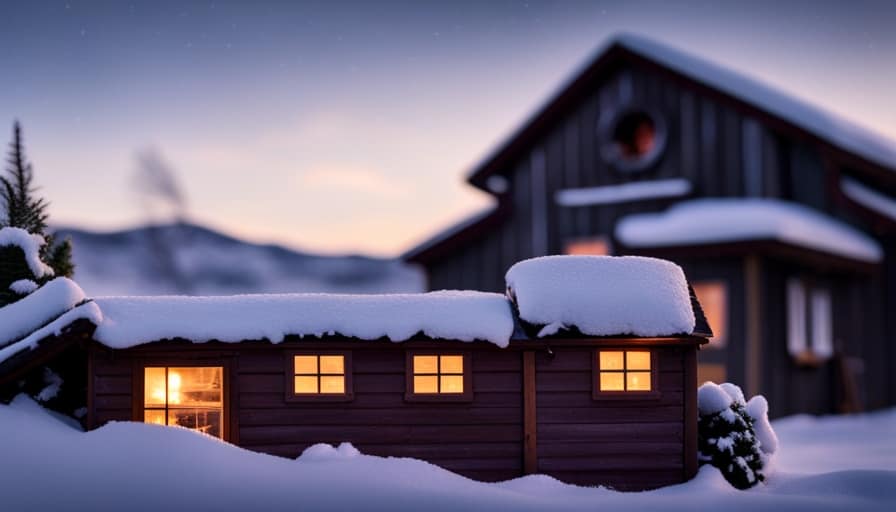
This includes obtaining proper permits, adhering to zoning laws, and following safety guidelines. To ensure a smooth process, I may consider hiring a professional builder who’s well-versed in local building codes and has experience with tiny house construction. Their expertise and knowledge will help me navigate the intricacies of the regulations and ensure that my tiny house is built according to the highest standards.
By understanding the local regulations and working with a professional builder, I can confidently proceed with my project while complying with all necessary codes and inspections.
With the building codes and inspections in mind, the next step is to secure financing and budget for my tiny house project.
Securing Financing and Budgeting for Your Project
To successfully secure financing and budget for my tiny house project in Colorado Springs, I frequently need to research various lenders and explore different funding options. Securing loans for a tiny house can be challenging, as it’s a unique type of project and not all lenders may be familiar with it. However, there are lenders who specialize in providing loans specifically for tiny houses.
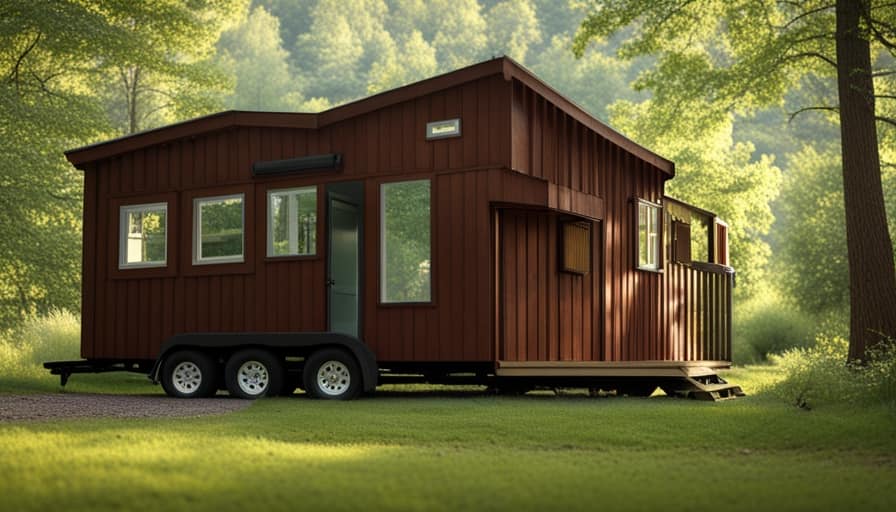
It’s important to gather all the necessary documents and information required by the lenders, such as the cost estimation of the project, including materials, labor, and any additional expenses. By presenting a thorough and well-prepared budget, it increases the chances of securing financing for the project.
Once the financing is secured, it becomes easier to move forward with the next steps of the project, such as dealing with utilities and exploring off-grid options.
Dealing With Utilities and Off-Grid Options
I can explore both traditional utility options and off-grid alternatives when dealing with electricity, water, and sewage in my tiny house in Colorado Springs.
When it comes to off-grid power, there are several options available. Solar panels are a popular choice, harnessing the energy of the sun to generate electricity. Wind turbines can also be used to generate power, particularly in areas with consistent wind patterns. Additionally, hydroelectric power can be harnessed if there’s a suitable water source nearby.
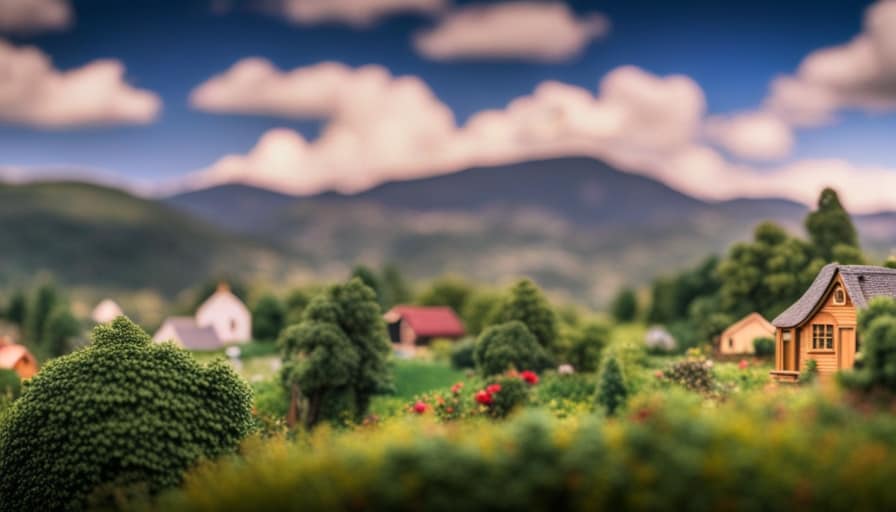
As for water sources, rainwater collection systems can be installed to capture and store rainwater for household use. Digging a well is another option, although it may require permits and additional expenses.
Lastly, composting toilets can be used to manage sewage in an off-grid tiny house, eliminating the need for traditional plumbing systems.
Frequently Asked Questions
What Are the Advantages of Building a Tiny House in Colorado Springs Compared to Other Cities in Colorado?
Building a tiny house in Colorado Springs has many advantages compared to other cities in Colorado. The city has a thriving tiny house community, supportive regulations, and an abundance of natural beauty to enjoy.
Are There Any Specific Design Requirements for Tiny Houses in Colorado Springs?
There are specific design requirements for tiny houses in Colorado Springs, including building regulations that must be followed. It is important to be knowledgeable about these requirements to ensure a successful and compliant build.

How Long Does the Zoning and Permitting Process Usually Take in Colorado Springs?
The zoning and permitting process in Colorado Springs can be a challenge. It takes time to navigate through the requirements and obtain the necessary approvals. However, with proper guidance and patience, it is possible to build a tiny house in Colorado Springs.
Are There Any Restrictions on Living in a Tiny House on Wheels in Colorado Springs?
Living in a tiny house on wheels in Colorado Springs comes with restrictions. Tiny house parking options are limited, and building codes for tiny houses must be followed. It can be challenging, but not impossible.
Can I Rent Out My Tiny House as an Airbnb in Colorado Springs?
Renting out a tiny house as an Airbnb in Colorado Springs is possible, but there are regulations to follow. It’s important to familiarize yourself with local zoning laws and obtain any necessary permits before listing your tiny house as a rental property.
Conclusion
Building a tiny house in Colorado Springs may be challenging due to zoning regulations, finding suitable land, navigating building codes, securing financing, and dealing with utilities.
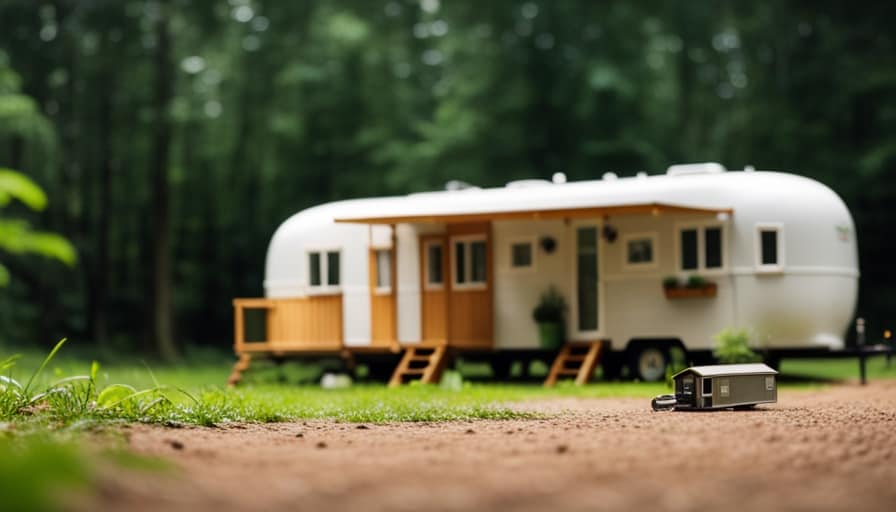
However, with determination and thorough research, it’s possible to overcome these obstacles.
For example, Sarah, a Colorado Springs resident, successfully built her own off-grid tiny house by carefully selecting land outside city limits, obtaining the necessary permits, and utilizing solar power.
Her experience demonstrates that with proper planning and knowledge, building a tiny house in Colorado Springs can be a rewarding and sustainable endeavor.
I’m Theodore, and I love tiny houses. In fact, I’m the author of Tiny House 43, a book about tiny houses that are also tree houses. I think they’re magical places where imaginations can run wild and adventures are just waiting to happen.
While tree houses are often associated with childhood, they can be the perfect adult retreat. They offer a cozy space to relax and unwind, surrounded by nature. And since they’re typically built on stilts or raised platforms, they offer stunning views that traditional homes simply can’t match.
If you’re looking for a unique and romantic getaway, a tree house tiny house might just be the perfect option.
-

 Beginners Guides2 weeks ago
Beginners Guides2 weeks agoHow To Buy A Tesla Tiny House
-

 Energy Efficiency2 months ago
Energy Efficiency2 months agoBest Tiny Homes For Cold Climates
-

 Beginners Guides1 week ago
Beginners Guides1 week agoTiny House Nation Where Are They Now Stephanie
-

 Tiny House Resources (e.g., legalities, cost, insurance, FAQs)2 months ago
Tiny House Resources (e.g., legalities, cost, insurance, FAQs)2 months agoDo Tiny Homes Need Planning Permission?
-

 Beginners Guides3 weeks ago
Beginners Guides3 weeks agoFrom The Show Tiny House Nation How Many Keep Their Tiny House?
-

 Beginners Guides2 months ago
Beginners Guides2 months agoUsing a Climbing Net For Treehouse Construction
-

 Beginners Guides2 months ago
Beginners Guides2 months agoHow to Build a Treehouse Without Drilling Into the Tree
-

 Beginners Guides3 weeks ago
Beginners Guides3 weeks agoTiny House Nation Who Pays For The Houses






